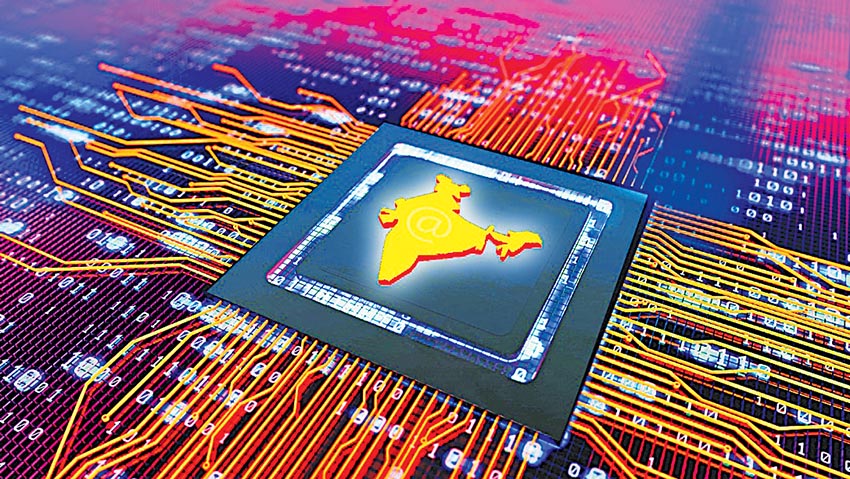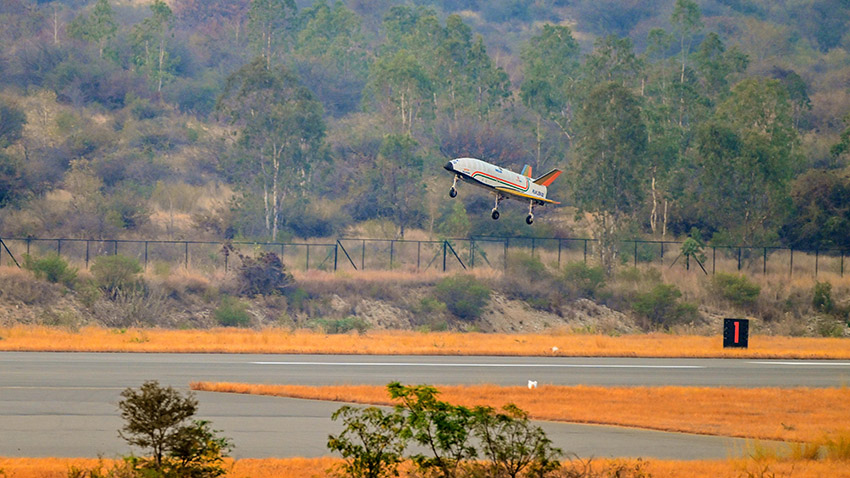India’s Emerging Semiconductor Industry: A Focus on Private Sector Efforts and Defence Applications
By Ninad D Sheth

Mumbai. India’s journey towards establishing a robust semiconductor industry has seen significant strides in recent years, particularly with the involvement of private sector players such as the Tata Group and investment commitment from global giants like Micron.
The semiconductor industry holds immense strategic importance globally, not only for its role in powering consumer electronics but also for its critical applications in defence and national security. India has already earmarked a record $15 billion Semiconductor Mission, in the US there was the recent enactment of the $208 billion Chips Act, while China’s has spoken of $1.4 trillion investment plan for its semiconductor sector over the next decade. A race is on to make the next generation of Chips which will be faster, smaller and capable of calculations on a scale that looks like a science fiction fantasy at the moment.
India currently is aiming at not only making Semiconductors but the equipment required to make them. This is a whole industry by itself and includes ATMP units, chemicals, speciality gases and many perishables that act as sub parts.
The Landscape of India’s Semiconductor Industry
India’s semiconductor industry has historically been over shadowed by dominant players in countries like the United States, Taiwan, South Korea, and China. While the defence forces have been manufacturing some chips for their own use through specialised labs, there has been no real semiconductor industry of any sale in India.
Notably, a retired naval officer, Commander Willy Sinha, did set up a small semiconductor unit in Okhla in the 1970s, but it seems it was too early for India to have recognised its importance.
The Indian Government set up the Semiconductor Complex Limited in Punjab in 1983 as a strategic public sector entity under the Ministry of Information, and in 1984, under technical collaboration American Microsystems, it started production of 5 micron CMOS (Complimentary Metal Oxide Semiconductor) chips, successively moving to produce 0.8 micron chips, powering India’s space and missile programme and flight instruments.
The technology is far ahead now, and recognizing the strategic importance of semiconductor technology, India has been making efforts to strengthen its semiconductor ecosystem. The government’s initiatives like the Electronics Manufacturing Clusters (EMC) scheme and the Production Linked Incentive (PLI) scheme have incentivized both the domestic and international companies to invest in semiconductor manufacturing in India.
According to a recent technology media entertainment and telecom report by Deloitte, a global consultancy firm, the Indian semiconductor market could be worth USD 55 billion by 2026, nearly 60 percent of which is driven by three industries: smartphones & wearables, automotive components, and computing & data storage.
According to Minister of Communications, Electronics and IT Ashwini Vaishnaw, India is encouraging the industry to be a critical part of the global supply chain and one of the world’s five top semiconductor manufactures within five years. That underlines the urgency that the Modi government accords to this strategic push.
Private Sector Initiatives: Tata Group and HCL foray into Semiconductors
Among the prominent players venturing into the Private entry into the semiconductor industry, Tatas mark a significant milestone for India’s indigenous semiconductor manufacturing efforts. In collaboration with various technology partners and government support, Tata Group aims to establish semiconductor fabrication facilities within the country, reducing India’s dependence on imports for critical components.
Investments and Partnerships
Tata Group’s semiconductor ambitions are backed by substantial investments from USD 5 to 10 billion in strategic partnerships. The global conglomerate has joined forces with leading Taiwanese semiconductor companies and technology firms to leverage their expertise in semiconductor manufacturing processes to eventually produce 28nm (nano meter) nodes for graphics processors and Internet of Things (IoT). Additionally, partnerships with academic institutions and research organizations facilitate innovation and talent development in the semiconductor field.
HCL had tied with Taiwan’s Foxconn to test and package semiconductors made by other companies, but Foxconn seems to have some other plans now. The field is open and growing, and major players are also looking at the Indian market seriously.
US-based Micron tech signed a memorandum of understanding with the Gujarat Government to set up a USD 2.70 billion semiconductor facility at Sanand near Ahmedabad, Gujarat. This project marks the largest investment in the ISM schemes and is the real statement of intent that takes Semiconductor manufacturing to centre stage in India.
Tower Semiconductor, an Israel-based leading chip foundry, has put forward a proposal to the Indian government to establish an $8 billion chip manufacturing facility in India. South Korea and India are in the process of setting up a joint commission that will look seriously at opportunities in the Semiconductor space including Chip manufacturing and testing facilities in the future.
On July 20, 2023, India and Japan formally signed a memorandum of cooperation to bolster the semiconductor sector in both countries.
Diversification and Vertical Integration
Beyond manufacturing, Tata Group’s semiconductor initiatives extend to packaging, and testing services, aiming for vertical integration within the semiconductor value chain. By diversifying its semiconductor portfolio, Tata Group seeks to cater to a wide range of applications, including consumer electronics, automotive, telecommunications, and defence. Notably, the Tatas are also investing USD 5 billion in UK for Electric Vehicle (EV) batteries. Chips are needed everywhere.
The most important aspect of the Semiconductor investments are that they are aimed at creating an ecosystem of manufacturing supply chain that will include very high tech clusters and benefit in value addition to the tech oriented Indian economy.
Defence Applications of Semiconductors
Semiconductor technology plays a pivotal role in modern defence systems, enabling advanced functionalities across various military applications. India’s focus on indigenous semiconductor capabilities aligns with its defence modernization goals and the vision of self-reliance in defence manufacturing. Lt. Gen Rajesh Pant (Retd) explains,
“Semiconductors are the building blocks of all digital devices. There have been reports of either deliberate chip design techniques or firmware manipulation which can lead to data thefts. That is why it is important to create chips within the nation which can be trusted especially for critical systems.”
Some key defence applications of semiconductors include:
Space: India has an advanced Space programme, with successful missions to Moon and Mars, as well as an ambitious Reusable Shuttle programme to ferry and bring back astronauts to and from space. The Government has already set up Indian Space Association under Lt Gen AK Bhatt (Retd) to encourage even the small and midlevel players to innovate, develop and produce required systems in collaboration with foreign majors.

Indian Air Force’s Aircraft Systems and Testing Establishment (ASTE) and Institute of Aviation Medicine (IAM) are regularly training Test Pilots, and from among them, the potential few as possible Astronauts. Their safety, during training, and in Space, or the moon, will depend upon robust electronics and survival systems powered by nano chips and secure connectivity.
Military Communication Systems: Semiconductors power secure communication systems used by armed forces for command, control, and coordination during missions. These systems rely on high-performance chips capable of encryption and data transmission in harsh environments.
Radar and Sensor Systems: Semiconductor-based radar and sensor systems provide crucial situational awareness to military personnel, detecting threats, monitoring airspace and maritime activities, and guiding precision munitions. These systems require specialized chips for signal processing, data fusion, and target tracking.
Unmanned Aerial Vehicles (UAVs) and Drones: Semiconductor technology forms the backbone of UAVs and drones, enabling autonomous flight, navigation, and payload delivery capabilities. Advanced sensors, processors, and communication modules empower UAVs for reconnaissance, surveillance, and combat missions.
Electronic Warfare (EW) Systems: Semiconductor components are integral to EW systems employed for jamming enemy communications, detecting radar signals, and countering missile threats. These systems demand high-speed Digital Signal Processing (DSP) chips and radio frequency (RF) devices for effective electronic countermeasures.
Cyber security and encryption: In an era of cyber threats and information warfare, semiconductor-based encryption technologies safeguard critical military networks, data, and communications from unauthorized access and cyber-attacks. Secure microcontrollers and cryptographic nano accelerators ensure the integrity and confidentiality of sensitive information.
For India’s private sector, led by companies like Tata Group, at the forefront of driving the country’s semiconductor ambitions could within a decade lead to a quantum leap in defence self-reliance.
The semiconductor industry’s strategic importance extends beyond consumer electronics, with significant implications for defence and national security. By investing in indigenous semiconductor capabilities – and investing in a magnitude, India aims to enhance its self-reliance in defence technology. The long term aim is to foster innovation, economic growth, and global competitiveness in the semiconductor domain. As private sector initiatives gain momentum and government support continues, India is poised to emerge as a key player in the global semiconductor landscape, with implications reaching far beyond its borders.
For this to come to fruition, it will be critical to give fast track approvals, encourage capability building on the second tier and maybe initially allow foreign talent, including persons of Indian origin living abroad, to come and work in India. Building a complete new industry requires will and investment from the very top, Political, Talent and Money.




